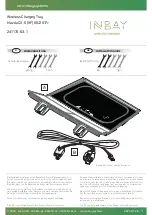
7-20
Vehicle care and maintenance
7
Tires
N00939200478
It is important to familiarize yourself with the following terms:
●
Cold tire pressure:
• The measured pressure after the vehicle has been parked
for at least three hours,
or
• The measured pressure when the vehicle is driven less
than 1 mile (1.6 km) after having been parked for three
hours.
●
Maximum inflation pressure: the maximum permissible
cold tire inflation pressure for this tire.
●
Recommended inflation pressure: the inflation pressure
for optimum tire performance.
●
Intended outboard sidewall:
• The sidewall that contains a whitewall, bears white let-
tering or bears manufacturer, brand, and/or model name
molding that is higher or deeper than the same molding
on the other sidewall of the tire,
or
• The outward facing sidewall of an asymmetrical tire that
has a particular side that must always face outward
when mounted on a vehicle.
●
Passenger car tire: a tire intended for use on passenger
cars, multipurpose passenger vehicles, and trucks, that
have a gross vehicle weight rating (GVWR) of 10,000
pounds or less.
●
Light truck (LT) tire: a tire designated by its manufacturer
as primarily intended for use on lightweight trucks or mul-
tipurpose passenger vehicles.
●
Tread: portion of a tire that comes into contact with the
road.
●
Tread rib: a tread section running circumferentially
around a tire.
●
Tread separation: pulling away of the tread from the tire
carcass.
●
Carcass: the tire structure, except tread and sidewall rub-
ber which, when inflated, bears the load.
●
Sidewall: portion of a tire between the tread and bead.
●
Section width: the linear distance between the exteriors of
the sidewalls of an inflated tire, excluding elevations due
to labeling, decoration, or protective bands.
●
Bead: the part of the tire that is made of steel wires,
wrapped or reinforced by ply cords and that is shaped to
fit the rim.
●
Ply: a layer of rubber-coated parallel cords.
WARNING
!
●
Driving with tires that are worn, damaged or
improperly inflated is dangerous.
These type tire conditions will adversely affect vehi-
cle performance.
These type tire conditions can also cause a tread sep-
aration or blowout which may result in an accident
causing serious injury or death.
●
Tires, including spare tire, degrade over time with
age even when they are not being used. It is recom-
mended that tires over 6 years generally be replaced
even if damage is not obvious.
BK0115900US.book 20
ページ
2009年10月27日 火曜日 午後12時1分
Summary of Contents for ECLIPSE 2011
Page 15: ...BK0115900US book 13 I n f o r ma t i o nP r o v i d e db y...
Page 25: ...BK0115900US book 10 I n f o r ma t i o nP r o v i d e db y...
Page 35: ...BK0115900US book 10 I n f o r ma t i o nP r o v i d e db y...
Page 95: ...BK0115900US book 60 I n f o r ma t i o nP r o v i d e db y...
Page 289: ...BK0115900US book 14 I n f o r ma t i o nP r o v i d e db y...
Page 367: ...BK0115900US book 78 I n f o r ma t i o nP r o v i d e db y...
Page 469: ...BK0115900US book 78 I n f o r ma t i o nP r o v i d e db y...
Page 483: ...BK0115900US book 10 I n f o r ma t i o nP r o v i d e db y...
Page 492: ...BK0115900US book 9 I n f o r ma t i o nP r o v i d e db y...
















































